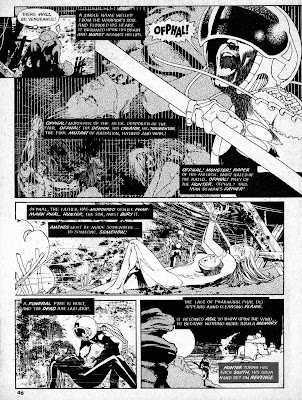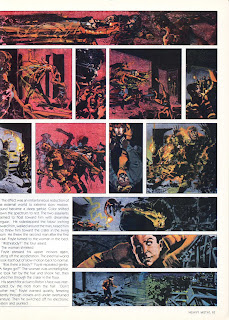Book Review: 'Gray Matters' by William Hjortsberg
2 / 5 Stars
William Hjortsberg is best known for his novel ‘Falling Angel’, which became the basis for the 1987 film ‘Angel Heart’ with Mickey Rourke and Lisa Bonet.
‘Gray Matters’ is essentially another take on the traditional sf trope of 'brains-housed-in-aquariums'.
The story is set in the future, where, in a massive underground facility, the disembodied brains (‘cerebromorphs’) of millions of people lie in row upon row of small canisters. These canisters are filled with a nutritive fluid, and individually wired to a central computer bank, which allows the consciousness of the brain to experience a sort of early 70s version of Virtual Reality.
The narrative centers on four of the cerebromorphs: a movie star named Vera Mitlovic; a twelve year-old boy named Denton ‘Skeets’ Kalbfleischer, who in the early 70s became the first of the cerebromorphs; an African artist named Obu Itubi; and a hotshot former astronaut and pilot, named Philip Quarrels.
The opening chapters introduce us to these characters, and the VR scenarios that hold their attention. While the cerebromorphs are content to indulge in their fantasies, the AI that supervises the facility nags them to adopt a quasi-Bhuddist regimen of mental exercises and meditation in order to provoke their ‘ascension’ to a ‘higher order’.
Over time, Obu Itubi becomes increasingly irritated by the hectoring of the AI, and in a fit of rebellion, he decides to break free of the facility. This rash action sends him on a journey of discovery, one with profound implications for the fate of the cerebromorphs…..
‘Gray Matters’ starts off well enough, injecting sardonic humor into the life – if it can be called that – of the cerebromorphs. With Obu Itubi's escape attempt, the reader is induced to expect some major revelations about the strange world in which the human population is represented by their stored brains.
Unfortunately, having set up this bizarre and disturbing world, author Hjortsberg is unable to follow through in terms of a denouement, and the second half of the book quickly loses momentum. It doesn't help matters that the author tries to maintain two separate plot threads, neither of which really engages the reader’s attention (despite the regular inclusion of softcore porn scenes - !).
The book ends on something of an inconclusive note, designed to tell us that things may not, after all, be well with the cerebromorph system.
In summary, ‘Gray Matters’ starts with promise, but loses focus courtesy of a meandering approach to plotting. In some fairness, it is true that the entire 'virtual reality / disembodied consciousness' sub-genre wouldn't really flower until the advent of the Cyberpunks in the early 80s. However, I can’t recommend this book to anyone, save the most dedicated readers of the ‘Disembodied Consciousness’ sub-genre of sf.

















































































